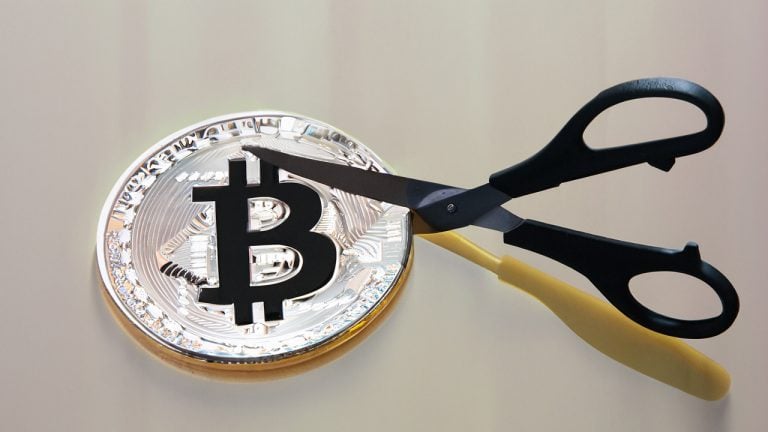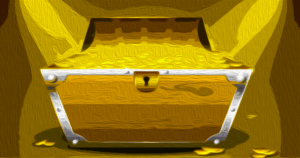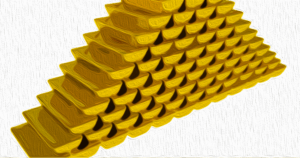
Bitcoin's hashrate has made a remarkable leap, setting a new record in the cryptocurrency market. This surge came about a week after Bitcoin miners faced a slight increase in difficulty, at block height 810,432. On October 8, the Bitcoin hashrate climbed to a historic high, reaching a staggering 440 exahash per second (EH/s) as per the seven-day simple moving average (SMA). This development comes as the countdown to the next block reward halving continues with less than 200 days or approximately 28,468 blocks left.
Bitcoin Miners: Navigating Global Uncertainties, Record Hashrates, and the Halving Countdown
As the clock ticks down to the much-anticipated Bitcoin halving, the cryptocurrency community is abuzz with anticipation. Currently, there are around 197 days left, placing the event around April 25, 2024. However, certain projections suggest an earlier date around April 21, 2024, and some even hint at a March 2024 occurrence.
At present, Bitcoin miners are rewarded with 6.25 bitcoins for each block they unearth. Post-halving, this reward will be halved to 3.125 coins per block. This significant reduction poses significant implications for miners safeguarding the network, as their income is set to decrease by 50%.
Understanding the Fluctuating Halving Dates and Record Hashrate
Bitcoin's hashrate, as indicated by the seven-day SMA, reached a record-breaking high on October 8, 2023. The hashrate escalated to an impressive 440 EH/s, despite the difficulty level scaling a record 57.32 trillion. If you've been puzzled by the varying halving dates projected by different monitors, the reason lies in the occasional decrease in the block interval below the ten-minute average, which has resulted in the difficulty level increasing twice already.
The latest block interval clocked in at just 8 minutes and 2 seconds, and it is projected that the difficulty level might rise between 3.71% and 5.8% by October 16, 2023. Miners are currently wrestling with diminishing earnings per petahash, with the current rates hovering just above $61 per petahash daily.
Market Dynamics Impacting Bitcoin's Hashrate
One of the key factors influencing this scenario is the drop in BTC's spot market price, a ripple effect of escalating tensions in the Middle East and mirrored dips in the U.S. and European stock markets. The Bitcoin network has also recorded a decrease in transactional activity, with daily transactions showing a steady decline since September 23.
The decrease in daily inscriptions has been a major contributor to this decline, depriving miners of fees from this source. On a positive note, miners have successfully cleared a previously congested mempool that contained over 500,000 unconfirmed transactions. However, the transactions they prioritized often attracted fees lower than the daily median or average.
Bitcoin's Soaring Hashrate and the Impending Halving: A Discussion
The soaring hashrate of Bitcoin and the impending halving bring about a range of thoughts and discussions within the cryptocurrency community. As these events unfold, the long-term implications on the crypto market and the world of Bitcoin mining remain to be seen.
Frequently Asked Questions
What precious metals can you invest in for retirement?
Silver and gold are two of the most valuable precious metals. Both can be easily bought and sold, and have been around since forever. These are great options to diversify your portfolio.
Gold: Gold is one of man's oldest forms of currency. It is very stable and secure. This makes it a good option to preserve wealth in uncertain times.
Silver: Investors have always loved silver. It is an excellent choice for investors who wish to avoid volatility. Silver, unlike gold, tends not to go down but up.
Platinium: Another form of precious metal is platinum, which is becoming more popular. It is very durable and resistant against corrosion, much like silver and gold. It's however much more costly than any of its counterparts.
Rhodium – Rhodium is used to make catalytic conversions. It is also used in jewelry-making. It is also very affordable in comparison to other types.
Palladium – Palladium is an alternative to platinum that's more common but less scarce. It's also more affordable. Investors looking to add precious and rare metals to their portfolios love it for these reasons.
What's the advantage of a Gold IRA?
There are many advantages to a gold IRA. You can diversify your portfolio with this investment vehicle. You decide how much money you want to put into each account, and when you want it to be withdrawn.
You have the option of rolling over funds from other retirement account into a gold IRA. This allows you to easily transition if your retirement is early.
The best part? You don’t need to have any special skills to invest into gold IRAs. These IRAs are available at all banks and brokerage houses. You do not need to worry about fees and penalties when you withdraw money.
However, there are still some drawbacks. Gold has historically been volatile. Understanding why you invest in gold is crucial. Is it for growth or safety? Is it for insurance purposes or a long-term strategy? Only once you know, that will you be able to make an informed decision.
If you want to keep your gold IRA open for life, you might consider purchasing more than one ounce. One ounce won't be enough to meet all your needs. Depending upon what you plan to do, you could need several ounces.
You don't need to have a lot of gold if you are selling it. You can even get by with less than one ounce. But, those funds will not allow you to buy anything.
How much should I contribute to my Roth IRA account?
Roth IRAs are retirement accounts where you deposit your own money tax-free. These accounts are not allowed to be withdrawn before the age of 59 1/2. You must adhere to certain rules if you are going to withdraw any of your contributions prior. You cannot touch your principal (the amount you originally deposited). You cannot withdraw more than the original amount you contributed. If you decide to withdraw more money than what you contributed initially, you will need to pay taxes.
The second rule is that you cannot withdraw your earnings without paying income taxes. You will pay income taxes when you withdraw your earnings. For example, let's say that you contribute $5,000 to your Roth IRA every year. Let's say you earn $10,000 each year after contributing. This would mean that you would have to pay $3,500 in federal income tax. That leaves you with only $6,500 left. You can only take out what you originally contributed.
You would still owe tax on $1,500 if you took out $4,000 of your earnings. On top of that, you'd lose half of the earnings you had taken out because they would be taxed again at 50% (half of 40%). So, even though you ended up with $7,000 in your Roth IRA, you only got back $4,000.
Two types of Roth IRAs are available: Roth and traditional. A traditional IRA allows you to deduct pre-tax contributions from your taxable income. When you retire, you can use your traditional IRA to withdraw your contribution balance plus interest. A traditional IRA can be withdrawn up to the maximum amount allowed.
Roth IRAs do not allow you to deduct your contributions. You can withdraw your entire contribution, plus accrued interests, after you retire. There is no minimum withdrawal amount, unlike traditional IRAs. It doesn't matter if you are 70 1/2 or older before you withdraw your contribution.
How do I Withdraw from an IRA with Precious Metals?
First decide if your IRA account allows you to withdraw funds. Next, ensure you have enough cash on hand to pay any penalties or fees that could be associated with withdrawing funds.
You should open a taxable brokerage account if you're willing to pay a penalty if you withdraw early. If you choose this option, you'll also need to consider taxes owed on the amount withdrawn.
Next, you need to determine how much money is going to be taken out from your IRA. The calculation is influenced by several factors such as your age at withdrawal, the length of time you have owned the account and whether or not you plan to continue contributing to retirement plans.
Once you know how much of your total savings to convert to cash, it's time to choose the type of IRA that you want. Traditional IRAs allow for you to withdraw funds without tax when you turn 59 1/2. Roth IRAs, on the other hand, charge income taxes upfront but you can access your earnings later and pay no additional taxes.
Once the calculations have been completed, it's time to open a brokerage accounts. A majority of brokers offer free signup bonuses, as well as other promotions, to get people to open accounts. It is better to open an account with a debit than a creditcard in order to avoid any unnecessary fees.
When it's time to make withdrawals from your precious-metal IRA, you'll need a place to keep your coins safe. Some storage facilities will accept bullion bars, others require you to buy individual coins. Either way, you'll need to weigh the pros and cons of each before choosing one.
Because you don't have to store individual coins, bullion bars take up less space than other items. You will need to count each coin individually. However, individual coins can be stored to make it easy to track their value.
Some people prefer to keep coins safe in a vault. Some people prefer to store their coins safely in a vault. Whatever method you choose to store your bullion, you should ensure it is safe and secure so you can enjoy its many benefits for many years.
Statistics
- (Basically, if your GDP grows by 2%, you need miners to dig 2% more gold out of the ground every year to keep prices steady.) (smartasset.com)
- If you take distributions before hitting 59.5, you'll owe a 10% penalty on the amount withdrawn. (lendedu.com)
- Contribution limits$6,000 (49 and under) $7,000 (50 and up)$6,000 (49 and under) $7,000 (50 and up)$58,000 or 25% of your annual compensation (whichever is smaller) (lendedu.com)
- Indeed, several financial advisers interviewed for this article suggest you invest 5 to 15 percent of your portfolio in gold, just in case. (aarp.org)
- This is a 15% margin that has shown no stable direction of growth but fluctuates seemingly at random. (smartasset.com)
External Links
investopedia.com
law.cornell.edu
- 7 U.S. Code SS7 – Designation of boards for trade as contract markets
- 26 U.S. Code SS 408 – Individual retirement accounts
forbes.com
- Gold IRA – Add Sparkle to Your Retirement Nest Egg
- Understanding China's Evergrande Crisis – Forbes Advisor
wsj.com
- Saddam Hussein's Invasion Helped Uncage a Bear In 1990 – WSJ
- Want to Keep Gold in Your IRA at Home? It's not legal – WSJ
How To
Gold IRAs: A Growing Trend
The gold IRA trend is growing as investors seek ways to diversify their portfolios while protecting against inflation and other risks.
The gold IRA allows owners to invest in physical gold bullion and bars. It can be used as a tax-free way to grow and it is an alternative investment option for people who are not comfortable with stocks or bonds.
Investors can manage their assets with a gold IRA without worrying about market volatility. The gold IRA can be used to protect against inflation or other potential problems.
Physical gold is also a great investment option, as it has unique properties like durability, portability, divisibility, and portability.
A gold IRA provides many additional benefits. One is the ability for heirs to quickly transfer ownership of gold. Another is the fact that gold is not considered a currency or a commodities by the IRS.
All this means that the gold IRA is becoming increasingly popular among investors seeking a haven during financial uncertainty.
—————————————————————————————————————————————————————————————-
By: Jamie Redman
Title: Unprecedented Surge in Bitcoin's Hashrate: An Insight into Upcoming Halving and Market Dynamics
Sourced From: news.bitcoin.com/bitcoins-hashrate-hits-record-high-amid-upcoming-reward-halving-and-market-challenges/
Published Date: Tue, 10 Oct 2023 16:02:18 +0000













